Tessa Conroy is an economic development specialist and assistant professor at the University of Wisconsin-Madison at the Department of Agriculture and Applied Economics and has a joint appointment with UW- Extension studying community economic growth and development, small business dynamics and entrepreneurs. She has a degree in business administration from Gonzaga University and a PhD in economics from Colorado State University. She conducted postdoctoral research at the UW-Madison and currently holds a research grant from the United States Economic Development Agency. Her research includes interests in applied microeconomics, entrepreneurship, gender, firm location, regional economics, and economic growth. She has written on the impact of small business loans, business location, the urban/rural divide, and gender and business ownership and entrepreneurism. Let’s welcome Tessa Conroy. [applause] – Thank you for the nice introduction, and thanks to all of you who are watching and listening. Tonight, I’m going to be talking about entrepreneurship and economic development. So I’ll be trying to give you kind of a view of the forest and think about how entrepreneurship fits into the bigger economic story of a lot of our towns and regions, particularly in Wisconsin.
I’m starting with a story about my hometown. So this is downtown Goldendale, Washington, and I’m starting with this because this is kind of about how I arrived at studying entrepreneurship and economic development. As you can see, I think that our downtown looks a lot like some other downtowns. It’s old and cute but suffering. It’s seen better days. And a lot of that has happened in the last 20 years since our aluminum plant closed. Our aluminum plant employed upwards of 30% of our population, and since it’s closed we’ve kind of had to reinvent ourselves. This is the plant on the Columbia River Gorge. At its peak, it employed close to 1300 people. It opened in 1971 with the kind of rise of manufacturing in the United States.
At one point, it provided almost $40 million in income and almost $2 million in taxes. So this is a really big or had a really big economic impact in a town of about 3500 people. Ultimately, the plant began to scale back in the late ’90s when energy prices started to go up. Aluminum plants used a lot of energy, so being located on the water near hydropower was really important for the aluminum plants. There are about 10 other aluminum plants spread out across the Pacific Northwest. But as energy prices got more expensive, aluminum prices also went down. It became harder and harder to become profitable. We also started to face global competition as new plants were being built that were modern and more efficient. So, ultimately, there were lobbying efforts at the local and national level, trying to get us maybe a better energy price for example, but the plant closed in the early 2000s.
It’s since been raised, and all that’s left is an industrial footprint. So I think maybe some of you have seen something like this. I call them an industrial graveyard, where something that was, you know, really important just isn’t there anymore. But before it closed, there were some pretty heroic efforts to try to get it to stay. This is a picture of a natural gas plant. Also right outside my hometown. People were really hopeful that this natural gas plant was going to save the aluminum plant. They thought this is going to provide cheap power and the aluminum plant will stay open or reopen and this will be kind of the saving grace. So we annexed land, we tried to get tax incentives to make this happen.
Interestingly, this linked my hometown to Enron. At a time when energy markets were going a little bit crazy, a subsidiary of Enron was initially managing the building of this new plant. It opened briefly for about two years and went bankrupt in 2004, never employing more than 20 people. So it didn’t have the effect that a lot of us were hoping it would. So despite these lobbying efforts, these local and national efforts to save the plant, despite our annexed land and our tax incentives, ultimately economic development happened where we weren’t looking. What you see here is a scanning gold drone, and in the background you see a wind farm. So here the wind tower is in the far distance of the upper picture as well. So what happened is we had a new company that opened in the ’90s, Insitu. And they were developing drones or unmanned aerial systems.
They only had a few employees at that time. In 2008, they sold to Boeing with over 600 employees. So a real success story. Ultimately, it was our local talent and our local entrepreneurs that generated new jobs for us. Similarly, the wind farms were first kind of coming to fruition in the late ’90s and early 2000s. We now have some of the largest wind farms in the west. So, ultimately, we had to invest in a local asset, being wind, and the energy infrastructure that we have from all the hydropower. And those were the things that generated economic development in my hometown. I want to kind of close this story by pointing out that what was happening in my hometown was bigger than my hometown.
There were, like I said, widespread plant closures. So our plant closed in the early 2000s, but by 2015 all nine or 10, depending on what you count, aluminum plants had closed in the Pacific Northwest. The plants closed as profits fell and global competition increased. So this had more to do with what was going on in big energy markets and around the world. And all the time and resources we used to try to save the plant were unsuccessful. And meanwhile, there may have been missed opportunities to support new and local businesses. So the question that I have as an economist now and as a researcher is, what might have happened if we’d devoted those resources even more into our local talent, even more into our entrepreneurs? What might the town look like if we had gone even further with our efforts to generate new businesses? So now, as a researcher, I think about things a little bit differently. I know that entrepreneurship is linked to several economic benefits. I’m going to spend a lot of time talking about how entrepreneurship is related to job creation.
But also we know that it’s linked to income growth, poverty reduction or alleviation, innovation, and regional stability. First, income growth and poverty reduction. Thinking kind of big picture, we know that countries with more entrepreneurship have higher GDP. So that means they’re either producing more and/or producing more valuable goods and services. Locally, we know that within the US entrepreneurship is tied to rural and urban income growth. So that means more wealth and higher incomes within our communities. We also know that entrepreneurship is linked to rural poverty reduction. The example I’m giving is Appalachia because even in this environment that seemingly lacks the infrastructure to benefit from entrepreneurship, poor, poor part of the country, even they have benefited from self-employment in terms of job growth and income generation. And then, at the micro or individual level, we’ve also seen how helping individuals become self-employed can help them out of poverty and reduce the need for our welfare programs.
This is one of my favorite topics, is the economic diversity and how entrepreneurship helps with kind of a portfolio approach to economic development. So over time, some businesses will close, others will do quite well. We actually know that dynamism is part of a really healthy economy. If you look at some of our most vibrant and thriving economies, they have really high establishment death rates or exit, but there comes alongside a high establishment birth rate or a lot of entry. So lots of dynamism in our healthiest economies. In Wisconsin, we see about, I think it’s around 10,000 businesses open and close each year. So that’s between 25 and 30 businesses each day kind of coming and going from the market. So relying on just one industry can leave a region vulnerable, and that’s the story of my hometown. We had about, like I said, 20%, 30%, 35% of our employment with one employer in one industry.
So when that employer goes down, or if it goes down, there’s nothing to offset it. So having a diverse portfolio of industries as an economic developer can create stability in your region. So we call that a portfolio approach to economic development. We kind of offset risks so we’re not too deeply invested in any one industry, and at any given time, hopefully, if something goes down, there’s something else on the rise. And this isn’t limited to industrial diversity. We have also seen that places that have more gender diversity in their business ownership were more stable during the recession. So, counties that had more women own businesses during the recession had more stable outcomes during the recession. So, women tend to manage the businesses a little bit differently. Oftentimes more risk averse. So some of these different management patterns actually create some stability as well.
Entrepreneurship is also linked to innovation. So you might think of entrepreneurs as innovators, and that’s not necessarily incorrect. A lot of our entrepreneurs do innovate, but oftentimes our entrepreneurs are the people who are delivering innovations onto the market. So they are bringing new goods and services to consumers. Those replace existing technology and ultimately promote advancement. They create new value for our consumers. So this is all part of economic growth. Ultimately, consumers benefit from having many choices to suit their needs. So having kind of the latest and greatest or maybe something that you didn’t even know you wanted is now available for you to purchase.
This gives firms a competitive advantage. If they can be the ones that create the good or service that consumers want, then they have an incentive to innovate, that’s their profit incentive. So this process of competition and innovation and gaining a market share drives the economy forward by creating advancement value wealth. In Wisconsin, and this is true across most of the country, or the whole country as far as I know, businesses are responsible for the majority of R&D spending. So this is a chart kind of showing the different shares of R&D spending. Here are sources of R&D spending. It’s a little bit weird just because we wanted to show you the various shares and make sure that everybody was visible. But the blue share, above 85% in most cases, is the share of R&D spending that’s coming from private industry. The orange is non-federal, non-state.
So we would think of this probably as nonprofits. Maybe the Cancer Research Association or something to that effect. And then the small gray sliver is our state spending, and then federal being the small yellow share at the top. So the overwhelming majority of R&D spending coming from businesses. Entrepreneurship is also linked to creating our local sense of community. We create and support local amenities. So Wisconsin has a pretty healthy tourism culture. We need businesses to make those amenities enjoyable for consumers so that you can go out on the lakes or go skiing or something to that effect. To enjoy being in the outdoors in particular, we need businesses to support our amenities.
They also provide specialty services and sell culturally specific goods. I like to give the example of New Glarus, which has really leaned into their Swiss identity. And they opened shops and they sell those types of goods and their restaurants sell that kind of food and people go to New Glarus expecting to see that kind of cultural identity. I think Wisconsin also has kind of a meat and cheese and beer identity. And we see lots of places offering those services. So it’s become part of our culture and what makes us unique, why people come here to spend their money. And it definitely gives our communities unique charm and character. This is what I think is probably the most important aspect of entrepreneurship. So many of our policy conversations when we talk about economic development we’re actually really talking about job creation.
How do we employ people? How do we create new jobs? That’s especially been the story coming out of the recession, which has been a relatively sluggish jobs recovery. We haven’t put jobs back into the economy quite as quickly as some would like, particularly in rural areas. But we’ve learned a lot over time about kind of how this works and where jobs come from. So, historically, we thought that job creation was about business size. In the 1980s, or before the 1980s, we thought that big businesses create jobs. So we were looking to kind of our large employers and these kind of monolithic companies to give us new jobs. In the 1980s, it was David Birch at MIT who got his hands on some really good business data. And he’s the one who helped us figure out that it was actually small businesses that generate jobs. This actually came after the Small Business Administration was already established, interestingly.
And this kind of verified maybe what some of us already knew on the ground, that small businesses are really important for job creation. So this kind of brought about a renewed emphasis on our small businesses and entrepreneurship. But we’ve gotten even better at understanding small businesses. More recent work shows that job creation has more to do with business age. It’s not necessarily small businesses that create jobs. It’s new businesses that create jobs. And it is their newness more than their smallness that drives job creation. New businesses often happen to be small. So that’s part of kind of like we’re conflating these two ideas, but when we can keep track of business age, we actually see that it’s our entrepreneurs, our newest businesses that are the job generators.
I’ll show you what I mean. So this is the share of creation or of job creation from businesses with less than 500 employees. That’s the Small Business Administration definition of a small business. A lot of us think of a small business as something much smaller than that. And here we have Wisconsin as well as some regional neighbors in the United States kind of here in the middle at 83%. So, in Wisconsin, we have nearly 90% of job creation coming from small businesses. So it’s not wrong to say that small businesses create jobs. I would just argue that it’s more precise to look at job creation by business age. So here we have five-year age increments.
So businesses from zero to five, six to 10, 11 to 15, 16 to 20, and 21 to 25. So, again, these are age classes of businesses. And you see that in Wisconsin almost 44% of job creation, almost 44% of job creation comes from our new businesses or our new and youngest businesses under age five. That’s actually a little less than the country on average. Between 50% and maybe even up to two-thirds of new jobs come from our youngest businesses. In Wisconsin, we tend to have a slightly less entrepreneurial activity compared to the rest of the country and more large legacy industries. So what I’ve done here is break apart that youngest category. So I have age zero businesses here, one, two, three, four, and five. And when we then kind of disaggregate even further, we see that over a quarter of our new jobs come from age zero businesses.
So over a quarter of jobs coming from our brand new establishments. That’s really substantial. It’s still a little bit less of the rest of the country. Typically about a third of jobs come from our youngest businesses. But this hopefully is really striking to you that almost a quarter of jobs or more than a quarter of jobs in Wisconsin are coming from our entrepreneurs and new businesses. So I mentioned that Wisconsin is a little bit below the national average but it’s still the case, so, nationally, I do want to point out about a third of new jobs come from new businesses, another third from that youngest age group from one to five. And then I have this statistic or this figure here just because I think it demonstrates how important entrepreneurship is. From 1980 to 2005, so over a 25-year period, annual net employment growth in the US would have been negative without the job creation from new ventures. So we would have lost jobs over this period had it not been for entrepreneurs, all the while our population and labor force are growing.
So we would have been in quite the jobs hole without our entrepreneurs. So, I spent some time talking about the benefits of entrepreneurship, how it’s linked to growth, poverty reduction, economic diversity and stability, the job creation benefits, of course, but I want to balance that with some of the bad news. Young businesses face high failure rates. Depending on the data you use, usually we expect about 50% of businesses to make it past their fifth year. So we lose about half in those young stages. So that means that after five years, 40% of the jobs initially created have been eliminated by closure. So that’s an important part of economic development. Most people, when they take a job, they want to know that that job is going to be here nine months from now or two years from now or five years from now. Some new jobs are not high-quality jobs.
It’s the case that our older firms are likely to offer better benefits. So, young firms are far less likely to healthcare and retirement programs, things like that. So, from an economic development perspective, I would say that this speaks to the importance of helping young firms survive and get to that point where they can really enhance their employment offerings. What’s most concerning, though, I would say, is that entrepreneurship is declining. This is another figure that I hope is really striking. It starts in 1977 here and ends in 2014, the most recent data available. And what we’re seeing is the start-up rate in Wisconsin. So our start-up activity has fallen by more than half over the last one, two, three, four, almost four decades. So without the start-up activity, we aren’t seeing the same amount of job creation.
You’ve seen it kind of tank here with the recession and it hasn’t really come back. Granted, we’re missing about two years of data just because it’s not yet available, but we’re not seeing the start-up rate come back quite like we’d hoped. I think that that might be part of the story as to why we’ve seen a slow jobs recovery. If we don’t have start-ups, then we’re not going to get those jobs benefits that I just described. That can be, these kind of negative aspects, though, I think can still be offset. Firms that do survive grow rapidly. For the most part with businesses we observe an up or out phenomenon. So, you either exit the market or you grow and do quite well. We also know that failure alongside openings is the sign of a healthy dynamic economy.
So Colorado, for example, high birth rate, high death rate. So, lots of turn. And we’ve known this for some time, that turning dynamic economies are doing quite well. So even though firms are exiting, it’s still part of a healthy economy, and we think part of that is because of the informational aspect of entrepreneurship. So even when an entrepreneur fails, they’re still poking the edges of the market. They’re still figuring out what works and what doesn’t. They’re still generating information about what consumers want. And that’s valuable to subsequent entrepreneurs. So you, I’ve heard the example at least, that in Silicon Valley entrepreneurs aren’t taken seriously until they’ve failed three or four times. Right? So there’s just a lot of information, a lot of knowledge to be gained, and even a failed enterprise helps us do that.
So there are long-term, and we’ve shown this empirically, there are long-term job benefits of even the death rate of new businesses. One thing that I find also hopeful in a time when rural areas are kind of struggling in terms of job creation and their economic story is that rural areas are surprisingly entrepreneurial. We see higher rates of proprietorship and higher rates of business survival. So a proprietorship is just a tax status but it’s indicative of at least some self-employment, of at least one person who has created a business. He may or may not employ others. So, here we have non-metro counties or the most rural counties in Wisconsin in the top and then move towards the most urban. And we see that in our rural areas we have the most proprietorships per 1,000 residents. And this is based on, again, the rural/urban continuum code, but I’ve just lumped them together so we can see kind of easily from most rural to most urban we actually have the most proprietorships or the most kind of seedlings of new companies in our rural settings. Here we have rural business survival.
And similarly, I’ve arranged them from most rural to more urban. We’ve seen that business survival is actually higher or they’re more likely to make it to five years in rural settings. So I think this is hopeful for rural America. There is some kind of mixed explanations as to why that might be. One explanation is the persistence of rural entrepreneurs. That maybe for some reason they have a little bit more stick-with-it-ness. On the other hand, this could be a lack of competition in rural areas. Maybe they survived because nobody’s putting that competitive pressure on them. Nobody’s forcing them out of the market, essentially.
And it could be that rural areas don’t have as many wage and salary options. They don’t have competitive jobs being offered, so people feel the need to create a job for themselves for lack of something better already in their community. But even still, I think this speaks to some self-initiative and some persistence in rural areas. So, how do we go about enhancing entrepreneurship? So this speaks to shifting away from attraction-based economic development or recruitment. A lot of dollars and energy have historically been spent on trying to get new firms to come into an area and create a bunch of jobs all at once. Supporting entrepreneurship is a lower cost strategy for job creation. So rather than get one business with 50 employees, entrepreneurship is more about maybe planting the seed for 25 businesses that will each have two employees. But those entrepreneurs are going to be tied to the community. They’re likely going to have relationships there.
They’re more likely to stay, and they’re willingness to stay is going to have less to do with the tax structure or something like that. So this is a long-term approach to economic development. So we can emphasize creating and growing local entrepreneurs and small businesses, and there are several kind of strategies I’m going to talk about. And these are what I considered the latest in the research. These are things that I’ve been working on over the last three to five years. These are what’s coming out from my colleagues as well. So there are other probably more obvious strategies in terms of making sure you have retail space, for example, but I’m just going to speak to those that I feel like I know the most about. So the first one I want to make is about changing demographics. And the first is an aging population.
The country is aging, especially rural areas. The average age in rural areas, in general, is higher than in our urban areas. But we also know that start-up rates are higher for people age 55 to 64 than they are even for people in their 20s and 30s. So this is a particularly entrepreneurial population. It’s kind of pre-retirement or retirement age folks who I think maybe are ready to exit their traditional job but not ready to stop being productive. They still have something to contribute. And they also have significant amounts of experience and financial capital. So I think this is a group of people rich with entrepreneurial potential. We’ve also been able to show that rural areas within migration in this age group, net in migration, these places have higher start-up rates.
So I think oftentimes when we think of entrepreneurship, we might think of maybe a young man in the tech center, or tech sector, that’s what comes to mind first. But I think we need to think more broadly about who can be entrepreneurs and make sure they’re included in our outreach efforts. Along those lines, I also want to talk about women. Women are a small but growing number or share of businesses. About three out of 10, four out of 10 businesses are women-owned. At the same time, women make up about half of the labor force. And they make up more than half of our college graduates, right now. So there’s reason to think that there’s potential for women to own about half of our businesses. We also know that the businesses that we do have tend to be out-performed by male-owned businesses.
So, they don’t have the same sales, they don’t have the same employment as male-owned businesses. I’ve given the example here that the typical male-owned businesses, for every dollar earned in the typical male-owned business, a woman-owned business is going to earn 27 cents. So, compared to the wage gap, that’s really dramatic. That’s even more stark, I would say. So what’s going on here, and what can we do about it? We know that when we kind of talked to entrepreneurs about why did you choose this form of employment for yourself? What made you decide to start a business? When we ask men, they say, well, this is high growth or this is my primary source of income. When we ask women, they’re not likely to say or not as likely to say that this is their primary source of income. We do hear them say that they’ve done it so that they can increase the time spent on childcare. So this is a strategy for dealing with the demands of kind of household production. So we see them increase time spent on child-rearing.
We also see modestly performing businesses, and you could argue it’s because they simply don’t have the time to do it all. And I think this is certainly not true of all women. We have high growth women entrepreneurs. But at the mean it’s more likely that you’re going to see this from women than you are from men. So what happens when we have adequate childcare? So, high quality and affordable childcare. We tend to see kind of a fork in the road. Women either stay in high wage salary jobs in the private sector, so they’re producing more, they’re contributing to the economy, generating income, or they’re able to pursue their high-growth entrepreneurship. So, I say sometimes that good entrepreneurship policy doesn’t always look like entrepreneurship policy, and I think this is an example of that, where childcare can actually be something that lends itself to a more entrepreneurial community. I also want to talk about networks.
So not just in relation to women but in relation to other entrepreneurs who maybe kind of outside the mainstream. So that’s minorities, that’s veterans, that’s maybe our older populations that I just mentioned. Networks are really important to entrepreneurs. We know that entrepreneurs are constantly learning from each other about what works and what doesn’t. We know that they’re connecting with lenders to find out about feasible financing strategies. They’re connecting with real estate agents to learn about good locations. They need to connect with suppliers. They need to learn about their consumers. So networks are really important.
We see places that are more entrepreneurial, our entrepreneurs are more networked in with each other, they’ve established reciprocity where they’re kind of working to benefit each other mutually. So entrepreneurs, or excuse me, networks are really important. And it’s not enough, say, to have a women’s business association, I would argue. That’s a great start in that women can learn from each other and support one another, but we actually need to make sure our entrepreneurs are kind of networked into the economic center of our towns so that we can all learn from each other and benefit one another. This is an example from a study I’ve been reading, and it says, “Irrespective of how shrewd or clever the woman is, she will “still not have access to the well-kept information that is saved for the good old boys.” So I know we’ve all heard the good old boys network and I know it’s easy to dismiss that it’s still around, but, anecdotally, when I go around talking about entrepreneurship, when I talk about gender differences, this is a story that I still hear, that women are perceiving kind of a certain, they’re perceiving that to some extent they’re outside the main information exchanges that would benefit their businesses. So, thinking about how could we create opportunities for networking with our chamber of commerce or with our business associations and things like that. Lending is also important to entrepreneurs, or financing. I’m talking here specifically about institutional finance. So we know that small business lending is linked to higher start-up rates, especially in rural areas.
And we also know that lenders face information asymmetries that can limit credit availability. So what do I mean by that? When an entrepreneur goes to a bank and needs to be evaluated for a loan, that loan officer is going to be trying to collect as much information as they can about that business and how likely it is to be successful. When they don’t have good information, it’s like looking into a black box. You don’t really know what’s there. It looks risky. It looks uncertain. That loan candidate is less likely to get approved. When lenders have good information, maybe because they have a personal relationship with the entrepreneur, you have sort of an insider’s perspective or an informal connection to that businessperson, you’re more likely to get a loan because they have better information that reduces risk and uncertainty. We see this a lot in rural areas. We call it relationship lending.
So to the extent that we can encourage a healthy exchange of information between lenders and entrepreneurs, we would expect easier access to financing for entrepreneurs. This is especially relevant, again, to our women and minority entrepreneurs who might be less networked than our other entrepreneurs. I also want to connect here and point out that most entrepreneurs are financed through personal savings and credit cards. We use the saying, “Friends, family, and fools.” Only about 10% or 15% of entrepreneurs are actually going to go to the bank and get a loan. Most people are going to use their own resources. And oftentimes they’re actually getting a home equity loan. So this is another way where entrepreneurship policy or good entrepreneurship policy might not look like good entrepreneurship policy because having a healthy housing market can actually lend itself to more entrepreneurship in that people have valuable homes that can get them some access to capital. So, coming out of the housing crisis, the populations that were hurt most by the housing crisis likely has consequences for their access to capital and maybe explains that low rate of start-up activity that I showed a few slides ago. The last point that I want to make also comes out of the networking studies that I’ve been doing.
And it basically shows, we can show that even if two places were identical, their social networks would evolve uniquely. And I think that makes intuitive sense to people. But what that means from an entrepreneurship or economic development perspective is that it’s extremely difficult to recreate Silicon Valley or Austin, Texas. And I think that that’s a story that we hear sometimes. People go to the high growth city or the splashy city and they come back and they say we’re going to be the next San Francisco, we’re going to be the next Austin, Texas, but that’s really difficult to do. Even if you could replicate the industrial composition, the education system, the demographic profile, it’s still the case the those entrepreneurial ecosystems are going to form uniquely and that’s going to dictate, to some extent, the entrepreneurial outcomes in each city. So I would argue that it’s more effective to invest in local strengths. Don’t try to be something you’re not. I give the example again, I want to circle back to my hometown, ultimately it was our wind, our energy infrastructure, our local entrepreneurs that generated the kind of economic development that we were looking for.
And I’m new here, but I am interested to hear kind of what the local assets might be in this area. So just a few concluding thoughts. New firms are critical to generating new jobs. So, in terms of when towns have to kind of reinvent themselves, particularly after losing a major industry, I would argue that new firms are a good place to look. Fostering entrepreneurship is a low-cost, long-term approach to economic development, so kind of thinking differently about economic development, moving away from that attraction-based recruitment strategy. And fostering entrepreneurship requires a mix of strategies that will vary by community. There’s not a silver bullet when it comes to entrepreneurship policy. Every town is going to be a little bit unique in terms of thinking about what they can do to develop their local assets. A few more resources for you. Thank you for your time.
Search University Place Episodes
Related Stories from PBS Wisconsin's Blog

Donate to sign up. Activate and sign in to Passport. It's that easy to help PBS Wisconsin serve your community through media that educates, inspires, and entertains.
Make your membership gift today
Only for new users: Activate Passport using your code or email address
Already a member?
Look up my account
Need some help? Go to FAQ or visit PBS Passport Help
Need help accessing PBS Wisconsin anywhere?

Online Access | Platform & Device Access | Cable or Satellite Access | Over-The-Air Access
Visit Access Guide
Need help accessing PBS Wisconsin anywhere?

Visit Our
Live TV Access Guide
Online AccessPlatform & Device Access
Cable or Satellite Access
Over-The-Air Access
Visit Access Guide
 Passport
Passport







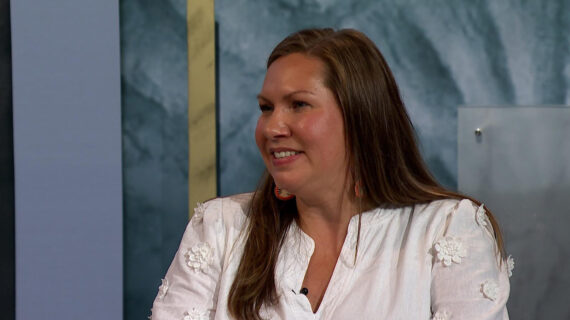


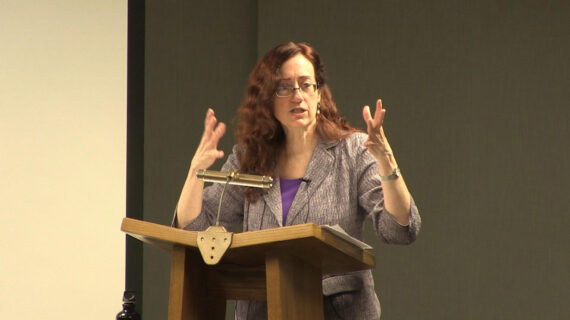
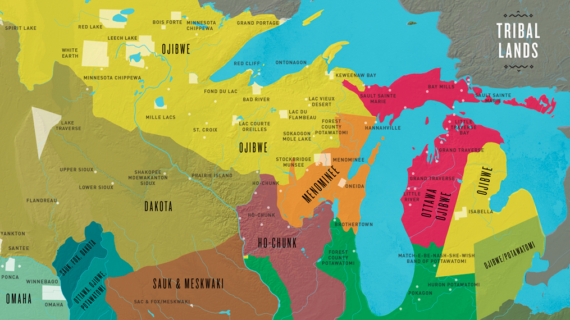
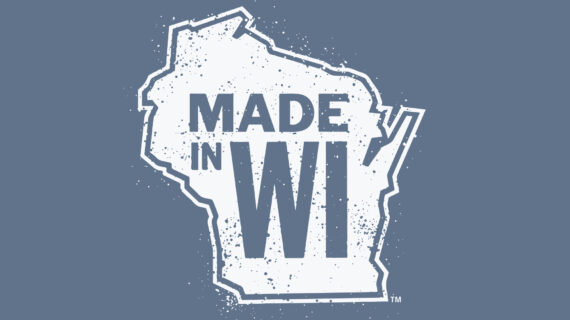

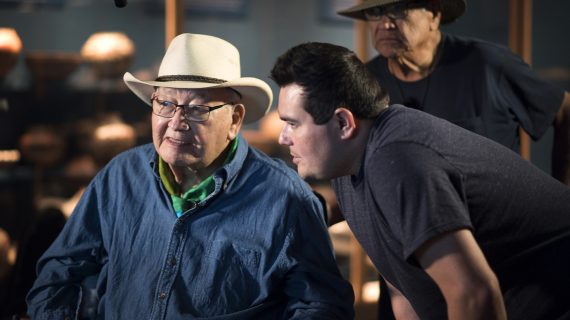



Follow Us